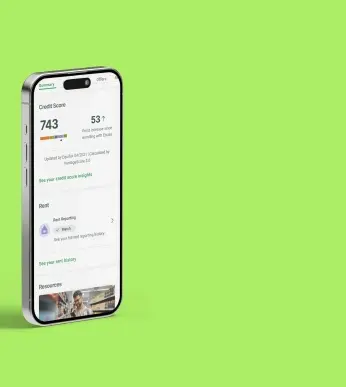Talking about money can feel like speaking an entirely different language. If getting on top of your financial wellness is a goal of yours for 2023, there might be a few technical terms that are making your head spin.
We’re breaking down some of the most common financial and credit-related terms this month in what can be considered your glossary of all things credit. Bookmark this post as a reference as you set out on your personal finance and credit journey, and stay tuned for Part II coming next week.
This week we’re discussing:
Credit vs. Debt
Before we can discuss common credit terms, we need to define both credit and debt. Credit and debt go hand in hand. You probably recognize debt as the money you owe. It’s the loan or borrowed money that you haven’t yet repaid.
Credit, however, shows your ability to pay back that loan. It says how much you can borrow based on your reputation for repaying debts in the past. Your credit comes in the form of a credit score, which the credit bureaus use to determine your ability to repay debts.
APR and Interest Rates
Interest rates are the additional cost a borrower will pay for taking out a loan, expressed as a percentage.
Interest rates on loans typically are expressed as an Annual Percentage Rate (more commonly referred to as “APR”). The rate includes the loan’s cost plus any other borrowing fees. It’s meant to give you a full understanding of what you owe and what the lender, bank, or credit card company will collect.
These rates impact everything from credit cards to car loans to mortgages. The interest rate is personalized based on the kind of loan, the time period to pay the loan, and the borrower’s credit score.
When you have a low credit score, odds are that you will receive a high interest rate when looking for a loan. On the flip side, a high credit score will likely result in a lower interest rate. Because of interest rates, the same loan amount can end up costing one person much more than it costs another.
In short, APR is the money you will pay for taking out a loan.
Loan Balance
A loan balance is used to identify the amount of money still owed on a loan. This can be called a credit card or loan balance, or simply a balance. This includes the interest or fees associated with the loan.
When looking at your credit report, you’ll see all your loan balances. You will want to ensure that balances are in good standing and current. When balances get above 25% of the total amount of credit you have available, it can become more difficult to qualify for other loans later.
Principal Balance
Regarding a loan, a principal balance is the dollar figure associated with the original loan, not including any interest. For example:
- If you borrow $10,000 for a car today, then today, the principal balance equals the initial loan or $10,000.
- After three years of making monthly payments, you will have paid down some of the principal, and perhaps only $7,000 remains of the original loan. At that time, the principal would be just $7,000 (the remaining amount left to pay on the original loan).
Billing Cycle
Also called a billing period, a billing cycle refers to the length of time between recurring bills from a lender. A prime example of this is the period of time between your credit card or electricity bills.
Most billing cycles are 28-30 days, but this may differ based on the terms set by the issuing bank or financial institution. Billing cycles remind you of the payment timetables you must follow to avoid being charged additional interest or late fees.
Charge-Off
A charge-off refers to a debt that the borrower has not paid off after prolonged delinquency. Charge-offs happen long after that first “overdue” notice, and when they do, the lender or creditor has written the account off as a loss and closed it to future charges.
That doesn’t mean that unpaid debt is forgiven. Instead, it is commonly sold to a debt buyer or transferred to a collection agency, and you are still legally obligated to pay the debt. This typically happens 120-180 days after the lender or vendor has unsuccessfully tried to reach a payee or if the payee isn’t meeting their monthly payments.
The original creditor might resell the loan to a collections agency, which could make the same charge show up on your credit report twice. Charge-offs are viewed negatively by the three major credit bureaus, Equifax, Experian, and TransUnion.
Cosigner
The person who takes out a loan is considered a primary borrower. A primary borrower can add a cosigner to the account to reassure the lender that the loan will be paid back. Adding a cosigner to your application when you have low or no credit can increase your chances of being approved.
Remember, if a primary borrower does not pay back the loan in full, the cosigner will be responsible and can face a damaged credit score.
Want more credit tips? Visit our Credit Education hub or follow us on Instagram!


